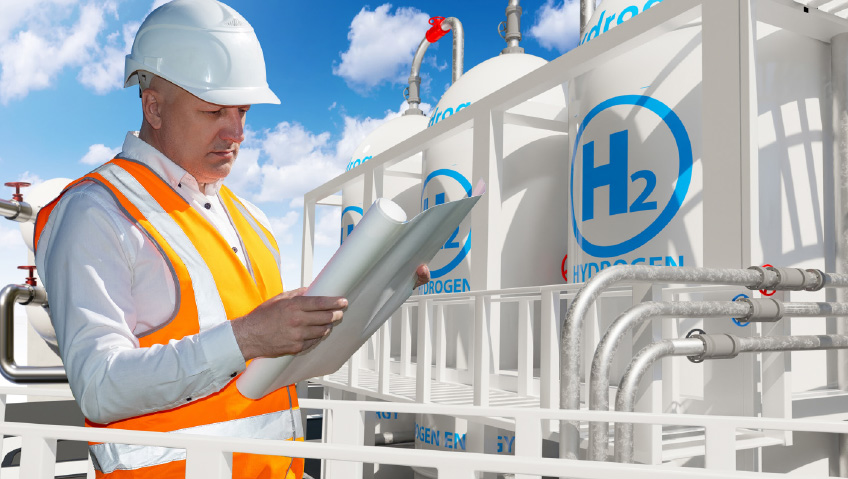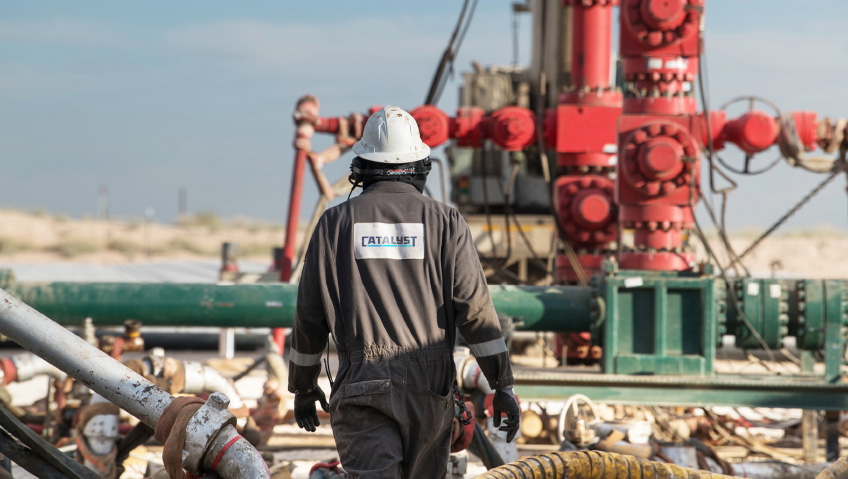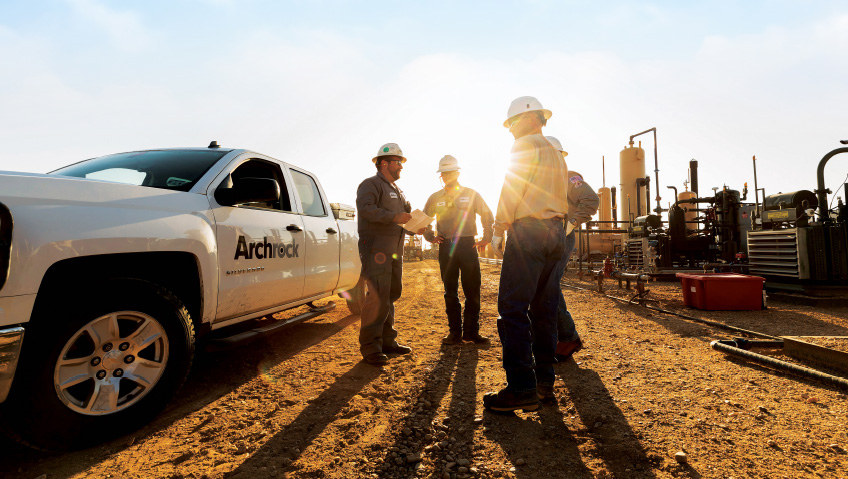On November 8, 2022, leaders from the federal and Alberta governments appeared at a press conference at the Northern Alberta Institute of Technology (NAIT) to sing the praises of hydrogen. A series of funding commitments were announced to support the construction of a $1.6 billion hydrogen production facility near Edmonton. The federal government provided $300 million in funding while Alberta plans to chip in $175 million, most of it from the Alberta Petrochemicals Incentive Program (APIP).
Once it becomes operational in 2024, the plant will be the largest hydrogen production centre in Canada. As run by Air Products, the self-described “world leader in hydrogen production,” the plant will produce 100,000 tonnes of hydrogen a year. Construction is “expected to create 2,500 construction jobs and thirty permanent operational jobs,” noted an article on CBC.ca.
“We are prioritizing a strong and sustainable economy, helping create well-paying jobs, and ensuring a cleaner future. Hydrogen is one of the key elements for our path to net zero and that’s why we’re making these important investments in Canada’s energy sector,” stated François-Philippe Champagne, Minister of Innovation, Science and Industry in an Air Products Canada press release.
The universe’s most abundant element, hydrogen has no taste, odour, or appearance. “Like electricity, hydrogen is an energy carrier that can be used to transport energy created elsewhere to another location. Hydrogen has the highest energy per unit of any fuel: the energy in one kilogram of hydrogen is the same as approximately 2.8 kilograms of gasoline,” said Natural Resources Canada.
In a fuel cell, hydrogen can produce electricity for heat, power generation, and transportation without any harmful emissions. At present, hydrogen is most commonly used in Canada for oil refining and in the production of steel, ammonia, and methanol.
There has been buzz about hydrogen over the past few years. “Momentum for hydrogen and fuel cell technology is growing globally,” added Natural Resources Canada. “Canada has the potential to produce large amounts of low-cost, clean hydrogen in excess of its domestic demand, creating an opportunity for Canada to become a supplier of choice of a new carbon-free energy export commodity.”
The emerging hydrogen sector could create “as many as 350,000 good, green jobs over the next three decades. All the while dramatically reducing our greenhouse gas emissions,” adds a 2020 Natural Resources Canada report called Hydrogen Strategy for Canada.
Should this optimistic scenario pan out, Alberta will be well-positioned to take advantage of any hydrogen windfall, an ironic twist given the province’s oil-rich heritage. Of the three million tonnes of hydrogen produced annually in Canada, 2.4 million tonnes were generated in Alberta. By comparison, the United States manufactures around 10 million metric tonnes of hydrogen a year, according to the Office of Energy Efficiency and Renewable Energy. Most of this American-made hydrogen is used for ammonia production and petroleum refining.
Alberta has been making hydrogen for decades and has enormous deposits of natural gas which is central to the production of the substance. In April 2021, the Edmonton Region Hydrogen Hub became Canada’s first hydrogen hub. One year later, Edmonton hosted the inaugural Canadian Hydrogen Convention. A second hydrogen convention in Edmonton the following year attracted dozens of exhibitors and speakers and thousands of delegates and attendees.
Back at the NAIT press conference, Alberta Premier Danielle Smith acknowledged her province’s role in the rise of hydrogen.
“Alberta is Canada’s hydrogen powerhouse, and projects like this will create jobs, diversify the economy, and build additional clean energy capacity for use across Western Canada. With such a huge attachment in the hydrogen markets, our government’s Alberta Petrochemicals Incentive Program is making us the most attractive jurisdiction for companies looking to invest in hydrogen. Alberta’s economy will continue to charge ahead full steam with an investment climate that encourages businesses to grow and fuel job growth,” stated the Premier.
Thanks to its oilfield heritage, Alberta has a great deal of experience with carbon capture and sequestration technology, which reduces carbon dioxide emissions. Also known as carbon capture utilization and storage (CCUS), this technology is used to make ‘blue’ hydrogen which some experts predict will be in particularly high demand going forward. In addition, Alberta has plenty of “suitable pore space to permanently sequester carbon dioxide emissions,” noted Alberta Hydrogen Roadmap, a 2021 report.
Hydrogen can be produced in a variety of ways. These processes are colour-coded for easy categorization, with grey, blue, and green hydrogen predominating.
Blue and grey hydrogen are produced via steam methane reformation (SMR), “a process in which methane from natural gas is heated using steam, usually with a catalyst, to produce a mixture of carbon monoxide and hydrogen,” explained Hydrogen’s Potential to Reduce Greenhouse Gas Emissions, a 2022 report from the Office of the Auditor General of Canada.
Unlike blue hydrogen, grey hydrogen is not produced with carbon capture technology. As a result, it is cheaper to make but results in more emissions. Green hydrogen, meanwhile, is created in water through an electrolysis process powered by renewable energy. Green hydrogen produces no emissions but is costly; blue hydrogen falls between these shades price-wise.
The Hydrogen’s Potential to Reduce Greenhouse Gas Emissions report compares the 2020 production costs and emission rates of grey, blue, and green hydrogen against those of natural gas. If natural gas costs $3.79 per gigajoule to produce and emits 60 kg carbon dioxide equivalent per gigajoule, grey hydrogen comes in at $16.70 per gigajoule with 2.2 times the emissions of natural gas. Blue hydrogen ranges between $19.60 to $23.90 per gigajoule and 1.1 to 0.25 times the natural gas emissions, depending on the efficiency of the carbon capture technology employed. Green hydrogen costs $62.60 per gigajoule to produce with solar, $63.80 per gigajoule with wind, and $22.00 per gigajoule with hydro. There are no emissions in all cases.
The Edmonton hydrogen plant will be employing carbon capture technology to achieve a ninety-five percent emissions removal rate, putting it solidly in the blue hydrogen camp. This could be a big selling point, as some industry experts believe blue hydrogen makes a perfect ‘bridge’ material.
The thinking goes like this: while grey hydrogen is by far the most common form of hydrogen in North America, it is not terribly good for the environment. Ideally, it would be best to switch to green hydrogen—a move that would help countries achieve international greenhouse gas emission reduction standards. The problem is green hydrogen is both costly and problematic in other ways.
“If hydrogen is to contribute to carbon neutrality, it needs to be produced on a much larger scale and with far lower emissions levels,” noted a research paper from energy giant Shell. “Electrolysis alone will not meet the forecast demand. It is currently expensive, and there is insufficient renewable energy available to support large-scale green hydrogen production… An alternative is blue hydrogen produced from natural gas along with CCUS… In addition, it is widely acknowledged that scaling up blue hydrogen production will be easier than delivering green hydrogen.”
This Shell information was contained in a report called The Shell Blue Hydrogen Process, which indicates the importance the energy company is putting on this methodology.
In a section headlined, ‘Why Blue Hydrogen,’ Shell wrote: “To meet net-zero emission ambitions, low-carbon hydrogen production must increase rapidly. ‘Blue’ hydrogen production from natural gas along with carbon capture, utilization and storage (CCUS) is necessary to bridge the gap until large-scale hydrogen production using renewable energy becomes economic. The cost of carbon dioxide already makes blue hydrogen via steam methane reforming (SMR) competitive against grey (without CCUS) and the Shell Blue Hydrogen Process (SBHP) further increases the affordability of blue hydrogen for greenfield projects.”
As it stands, Alberta is not the only jurisdiction to recognize the benefits of blue hydrogen. A year before the Edmonton announcement, Air Products launched a US$4.5 billion construction project to build a blue hydrogen clean energy complex in eastern Louisiana. The plant is expected to be operational in 2026.
“Air Products will build, own, and operate the megaproject, which will produce over 750 million standard cubic feet per day of blue hydrogen,” read an October 14, 2021, press release from Air Products. “The project will create 170 permanent jobs with a total annual payroll of $15.9 million and more than 2,000 construction jobs over three years. It represents Air Products’ largest ever investment in the U.S.
“Approximately ninety-five percent of the CO2 generated at the facility will be captured, compressed, and transported safely by pipeline to multiple island sequestration sites located along a pipeline corridor extending up to thirty-five miles to the east of the new production facility,” added the press release.
“Carbon capture and sequestration are important to Louisiana’s efforts to reduce carbon dioxide emissions while maintaining jobs and growing our manufacturing base,” Louisiana Governor John Bel Edwards was quoted as saying.
Out of the Canadian prairies, Alberta has adopted much the same spirit. “With a growing global market—estimated by the Hydrogen Council to be worth US$2.5 trillion a year by 2050—hydrogen has the potential to be the next big chapter in Alberta’s energy story,” noted former Alberta Premier Jason Kenney in the Alberta Hydrogen Roadmap.






